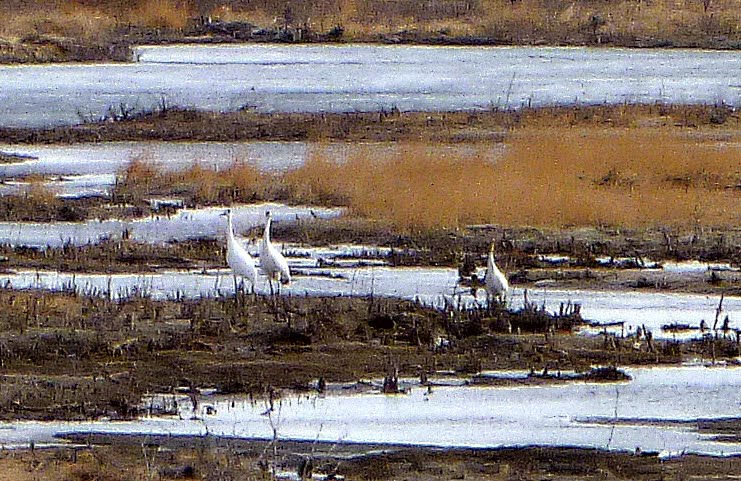by Chester McConnell, Whooping Crane Conservation Association
Excitement is rampant in many thousands of bird watchers when whooping cranes begin their migration from Buffalo National Park, Canada southward to Aransas National Wildlife Refuge, Texas. Birders get a high when they are lucky enough to spot an endangered whooping crane and add it to their life list of birds observed. To many it is the “crown jewel” of their observations. Such spotting’s are discussed at ornithology meetings, boasted about at cocktail parties and even announced at church. “Really, we are fortunate when blessed with seeing one of the approximate 300 whoopers in the last remaining wild flock” said Dorothy McConnell, Daphne, AL. Dorothy and her husband have traveled all along the 2,500 mile migration route to watch whoopers and other birds.
Many birders take their whooping crane sightings one step more. They report their observations on the Whooping Crane Conservation Association’s web site at https://whoopingcrane.com/report-a-sighting/ . The Association analyzes the reports, plots the sightings on a map and sends the reports to officials in the U.S. Fish and Wildlife Service. Reports are forwarded to either of two Service offices depending on whether the whoopers were spotted west or east of the Mississippi River. The reports by citizens are used by the Fish and Wildlife Service along with reports from its own team of federal and state spotters.
Western sightings are primarily from the Aransas-Wood Buffalo flock with a few from the non-migratory experimental flock in Louisiana. Most the eastern sightings are from the Wisconsin-Florida experimental flock or the non-migratory Florida flock. The Whooping Crane Conservation Association received approximately 150 reports from citizens during the past five months. All of the reports are evaluated and assist the federal officials in their monitoring responsibilities.
Reports start arriving to the Association soon after the whoopers depart from Wood Buffalo NP. Approximately 15 reports were received from Canada during September and October. A month later reports arrived from North Dakota, Nebraska, Kansas and Oklahoma. Most of the recent reports have been from Texas. Just this morning Jorjanna Price sent a report of three whoopers in a pasture in Refugio County, TX. This sighting was near Aransas Refuge, winter home of whooping cranes. Other reports came from Rebecca Alderson of two adult whoopers in south central Kansas; Rob Vinson spotted one adult bird in southeast Missouri; two other reports from Tracy Wisenburg of six whoopers and Byron Stone of three, both in Granger Lake, Texas; eight birds were reported at Thorndale, Texas by Nadine French; Chris Flannigan spotted two adult birds near Seadrift, Texas; and Darren Schlessinger observed three (2 adults and 1 young) north of Austin in Stillhouse Hollow Lake, Texas.
The Association has received some unusual reports. Several birders reported five whooping cranes on private lands near the Quivira National Wildlife Refuge and Cheynne Bottoms State Wildlife Area in south central Kansas. These birds have been detected there since December 2011. Dan Severson, Quivira’s Refuge Manager believes that due to the mild winter and plenty of food, these birds may just remain in the area all winter rather that migrating to Aransas Refuge as usual.
The most unusual report that Whooping Crane Conservation Association has received was last week from Bill Riggs, Nebraska. Bill reports that he observed three whooping cranes (two adults and one juvenile) in the Platte River vicinity. Bill told the Association that, “I was driving along and spotted the birds a little before noon. They were
still there when I came back the same route. I’ve been blessed to see whooping cranes several times, a few times one was traveling with the Sandhills. But usually I see them after they’ve (whoopers) already headed on north. The whoopers seem more inclined to wait for warmer weather, around mid-April to start their own journey back north. If I hadn’t seen these myself, I wouldn’t have believed this. I first thought maybe they could have been Great or Snowy Egrets; I’ve seen both out there, but these look like Whoopers, two adults and one juvenile, slightly smaller with just a bit of rusty color left from the neck up.” On a return trip to the site, the whoopers could not be located.


